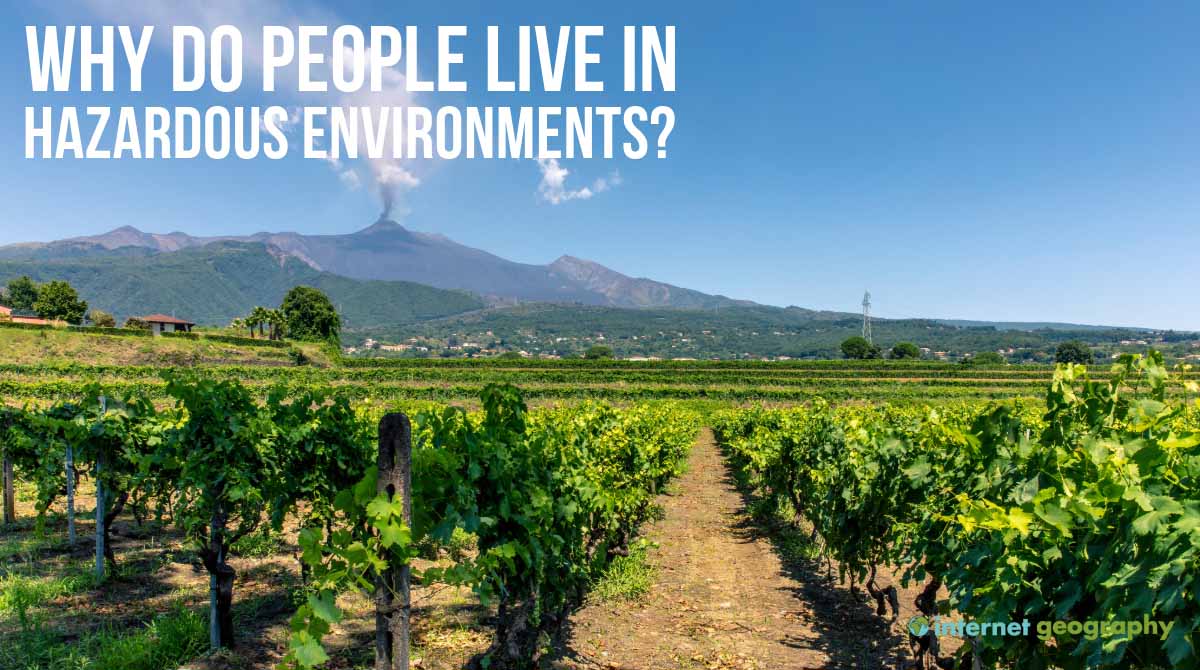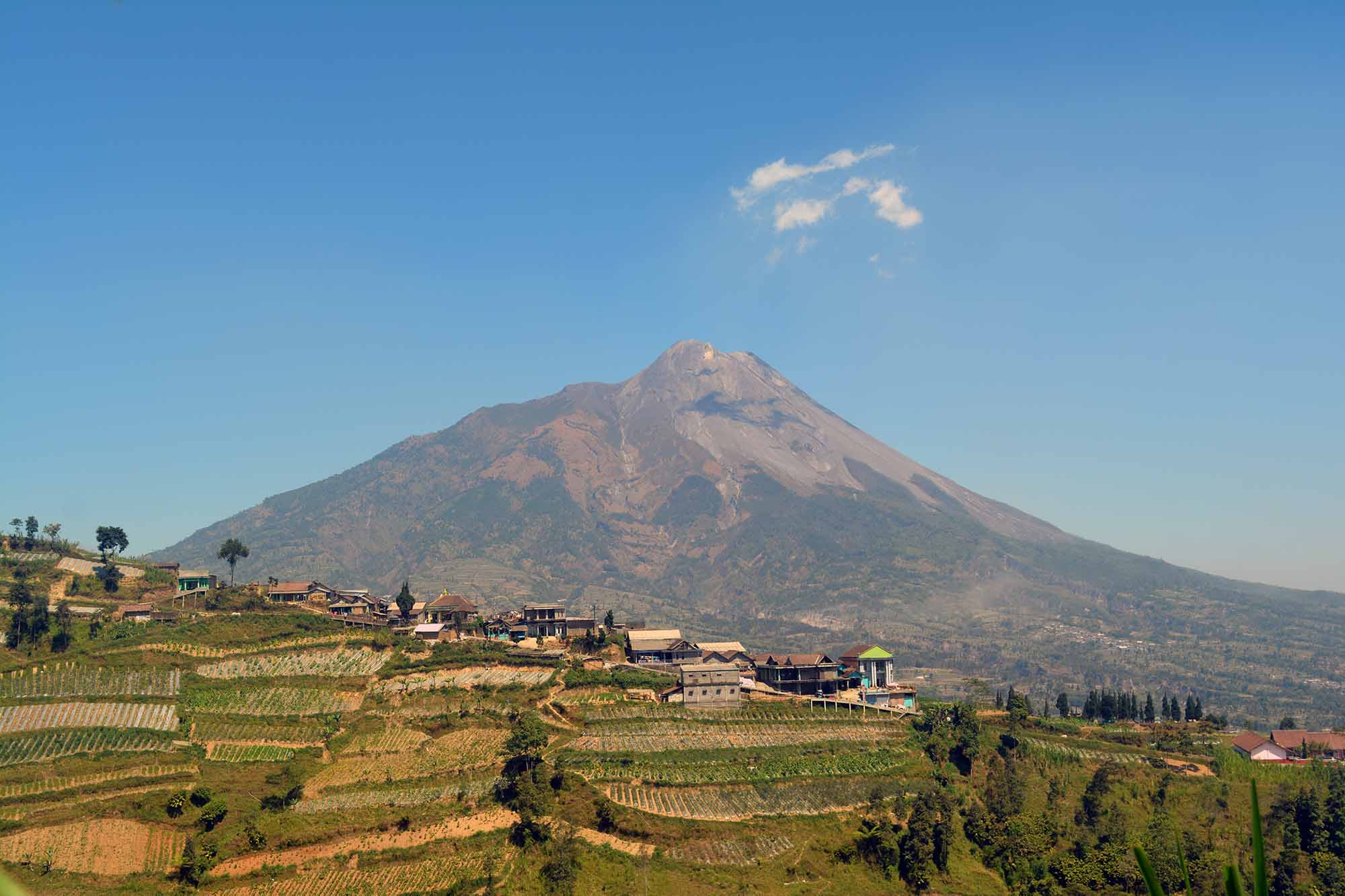Although climatic and tectonic events are hazards, they are only a risk if they occur in locations where people live. Natural processes like volcanic eruptions, earthquakes, floods, or tropical cyclones pose risks to human life, property, and livelihoods in hazardous environments. Despite these risks, millions worldwide continue to live in these areas. But why? The reasons can be complex, often balancing the benefits of these environments against their dangers.
What are the hazards associated with tectonic and climatic events in populated areas?
What hazards are associated with volcanic activity?
Primary hazards:
- Lava flows: Molten rock flows downhill, destroying land and property.
- Pyroclastic flows: Fast-moving, deadly clouds of hot ash, gas, and rock.
- Volcanic ash: Fine ash ejected into the atmosphere, damaging crops and infrastructure.
- Volcanic gases: Release of harmful gases like sulfur dioxide, causing air pollution.
- Earthquakes: The movement of magma can lead to earthquakes.
Secondary hazards:
- Lahars: Mudflows formed when volcanic ash mixes with water from rainfall or melting snow.
- Landslides: Unstable slopes collapse during eruptions.
- Climate effects: Volcanic ash and gases can lead to short-term cooling due to atmospheric particles blocking sunlight.
- Acid rain: Sulfur dioxide released into the atmosphere combines with water, forming acid rain that damages vegetation and buildings.
Impacts:
- Destruction of homes, infrastructure, and agriculture.
- Displacement of people and loss of livelihoods.
- Loss of life.
- Disruption to communications.
- Health impacts from ash inhalation and air pollution.
- Long-term economic impacts on tourism and farming.
- Closure of airspace.
What hazards are associated with earthquake activity?
Primary hazards:
- Ground shaking: Causes buildings and structures to collapse.
- Ground rupture: Cracks and shifts in the Earth’s surface along fault lines.
Secondary hazards:
- Landslides: Triggered by seismic activity on unstable slopes.
- Rockfalls: Loose material falls due to the movement of the ground.
- Tsunamis: Ocean waves generated by undersea earthquakes.
- Soil liquefaction: Saturated soil loses strength, causing buildings to sink or collapse.
Impacts:
- Loss of life and injury from collapsing structures and falling debris.
- Widespread destruction of infrastructure and housing.
- Disruption to water supplies.
- Flooding caused by collapsed dams.
- Loss of utilities such as electricity and gas.
- Economic losses from damaged businesses and industries.
- Long-term psychological impacts on survivors.
What hazards are associated with tropical cyclones?
Primary hazards:
- High winds: Damage to buildings, power lines, and vegetation.
- Heavy rainfall: Leads to flash flooding and river floods.
- Storm surges: Coastal flooding caused by rising sea levels during the storm.
- Flooding: Coastal and inland.
Secondary hazards:
- Landslides: Triggered by heavy rainfall on slopes.
- Flooding: Prolonged rainfall causing rivers to overflow.
- Water contamination: Floodwaters pollute drinking supplies, increasing disease risk.
Impacts:
- Destruction of homes, infrastructure, and agricultural land.
- Loss of life and injury from flying debris, flooding, and landslides.
- Economic losses in affected regions due to damage to tourism, agriculture, and industry.
- Salinisation of fresh water.
- Habitat destruction.
- Long-term recovery challenges for displaced populations.
Benefits of Living in Hazardous Areas
- Fertile Land for Agriculture
- Volcanic soils are rich in nutrients, making them ideal for farming. For example, areas near Mount Merapi in Indonesia support agriculture despite the risks of eruptions.
- River deltas, like the Ganges Delta, provide fertile silt deposits that boost crop yields.
- Economic Opportunities
- Coastal areas and river deltas enable trade and transport due to their proximity to ports and waterways. This access supports industries like fishing and commerce.
- Regions with geothermal activity, such as Iceland, provide jobs in energy production and attract tourists to features like hot springs and geysers.
- Natural Resources
- Volcanic areas often contain valuable minerals that can be mined for construction and industrial purposes.
- Fishing grounds in deltas and coastal areas provide both food and income for local communities.
- Tourism and New Land
- Volcanic landscapes and lava flows attract visitors, creating jobs and boosting local economies.
- Over time, volcanic eruptions can create new land that can eventually be used for settlement or farming.
Why People Choose to Stay
- Historical and Cultural Ties
- Many families and communities have lived in these areas for generations, often unaware of the risks when they first settled.
- Cultural or religious significance may tie people to certain places, such as living near a sacred mountain.
- Economic Constraints
- For many, hazardous environments are the only affordable option for housing. For example, steep slopes or flood-prone areas often have cheaper land prices, making them accessible to poorer communities.
- Low Perceived Risk
- Some hazards occur infrequently, leading people to underestimate the danger. For example, an earthquake or volcanic eruption might not happen for decades.
- Advances in technology, such as better monitoring, warning systems, and resilient building designs, can create a sense of security.
Examples of Living with Hazards
- Ganges Delta, South Asia: Fertile soils and abundant water support farming, but tropical cyclones, like Cyclone Amphan in 2020, cause devastating floods.
- Mount Merapi, Indonesia: Local farmers benefit from fertile volcanic soil while living under constant threat of eruptions.
- Iceland: Geothermal energy powers the country and supports tourism despite the volcanic and seismic activity.
Balancing Benefits and Risks
People living in hazardous environments constantly weigh the advantages of fertile soils, natural resources, and economic opportunities against the potential dangers. For many, the benefits make the risks worth taking. However, as the impacts of climate change intensify hazards like tropical cyclones and flooding, communities in these areas may face more significant challenges in the future.
Understanding why people choose to live in hazardous environments can help us better plan for disaster risk reduction, improving resilience and safety for those at risk.


